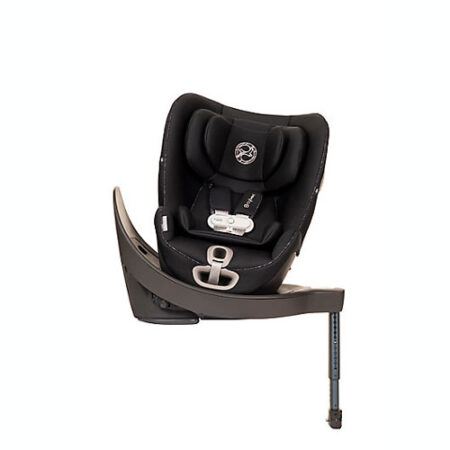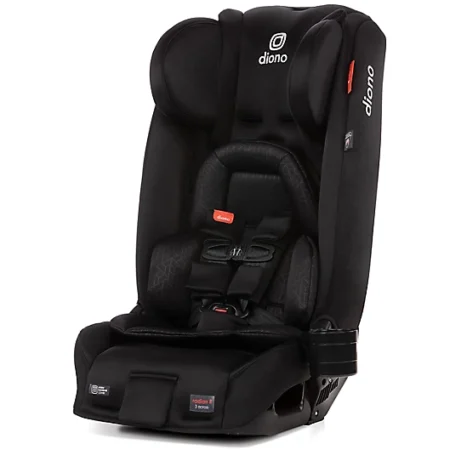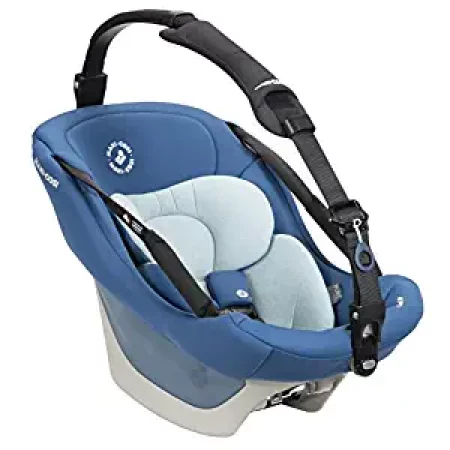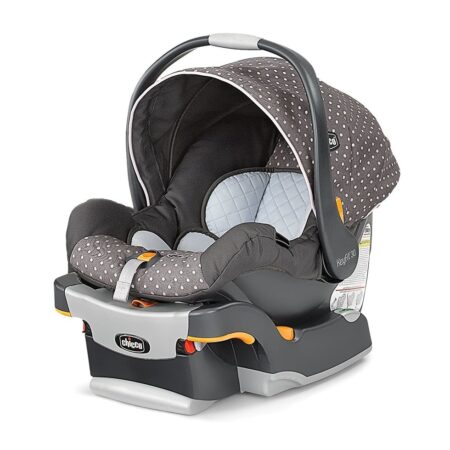A parent’s guide to car seat safety: Tips, rules & product picks
From choosing the right car seat to car seat safety hacks, here’s everything you need to know about car seat safety.
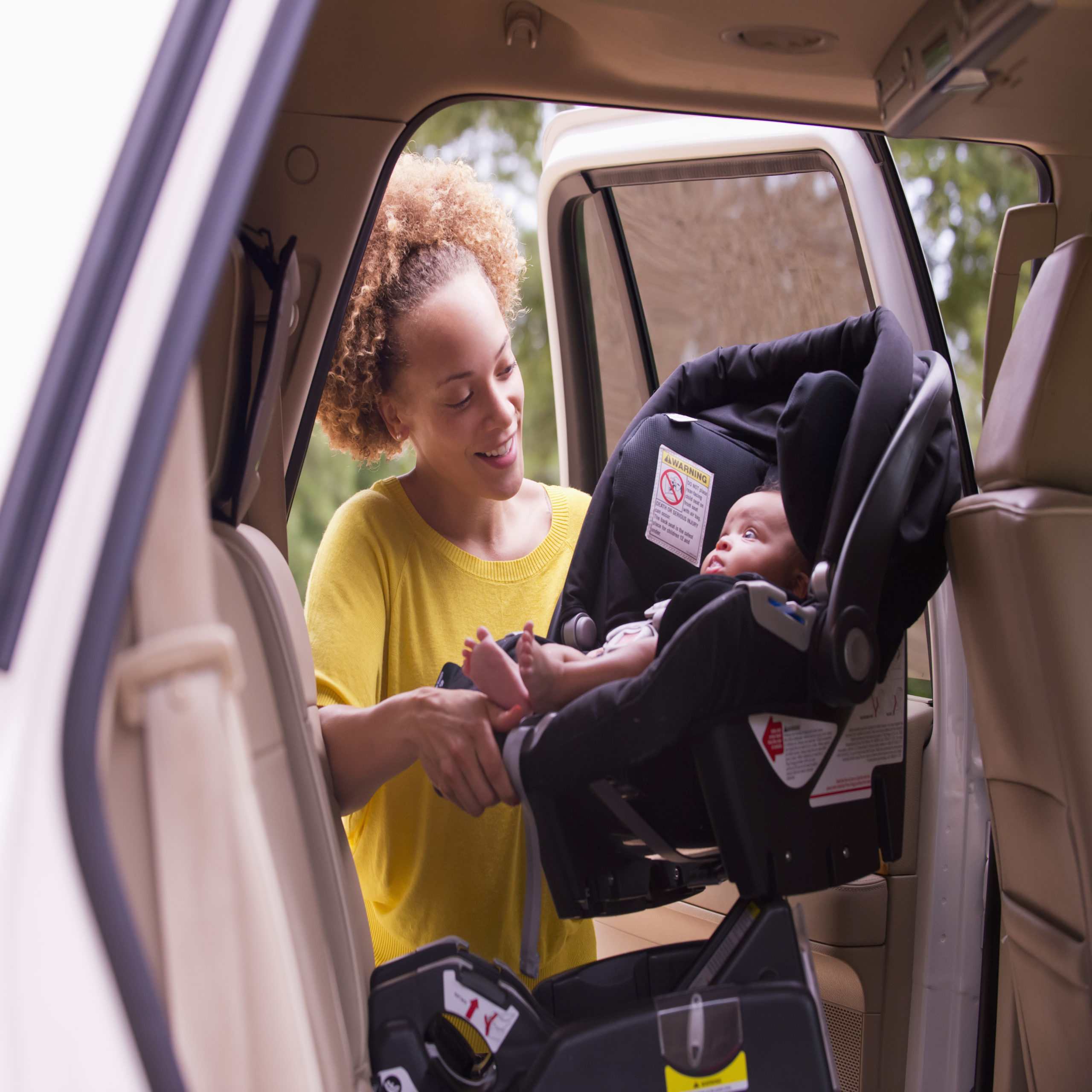
Ariel Skelley/Getty Images
We independently select and share the products we love—and may receive a commission if you choose to buy.
Along with cribs and strollers, car seats top the list of new baby must-haves. Choosing a car seat for your child can feel daunting, namely because it’s tricky to keep up with the latest car seat guidelines, determine which model will actually fit in your car—and figure out how to use a car seat safely. Should you get a heavy-duty, convertible car seat that can last from infancy through the early school years, or should you invest in a more portable infant car seat and stroller system now, swapping it for a forward-facing toddler seat down the line? Both options have their pros and cons.
Which is why we asked experts to break down what you need to know about car seat safety, how to choose the best car seat for your needs and smart car seat installation hacks.
How to choose a safe car seat: Factors to consider
“I remember when I was pregnant with my first child and I went to one of the large baby stores to look for car seats, I was completely overwhelmed by all of the choices! Luckily it doesn’t take a rocket scientist, or even an engineer like me, to choose a car seat,” says Jennifer Pelky, Senior Engineering Manager – Advanced Interior Safety of Toyota Motor North America.
But there are things to keep in mind before you buy. Here’s what experts say to know about choosing a car seat:
- You really can’t go wrong. “All car seats for sale in the U.S., regardless of price point, must meet the same safety standard (FMVSS 213),” Pelky says. “The starting point should be making sure the car seat fits your child [age, height and weight], fits your vehicle, and you can install it correctly every time.” But rest assured that any car seat you purchase from a U.S. store rather than a third-party retailer on Amazon will have been deemed safe according to U.S. standards.
- Your child should stay rear-facing for longer than you think. According to The American Academy of Pediatrics (AAP), many parents transition children out of rear-facing too soon—kids should ride rear-facing as long as possible. “This means they should stay rear-facing until they reach the height or weight limit for rear-facing in their car seat. This will vary by car seat model and child but is generally between the ages of 2 and 4,” says Pelky. You may want to look for a bigger model that can keep them rear-facing for longer.
- Purchase your seat from a reliable retail store, notes Mia Rosenberg, CPST, a certified baby gear expert at PishPosh Baby. Some stores will let you try installing the car seat in your vehicle before purchasing to make sure it fits. If you’re buying online, check the car seat space requirements to ensure it’ll work with your car.
- Consider purchasing more than one car seat base. Infant car seats click into and out of a pre-installed base, but it can take longer to move and reinstall the base between vehicles. If you have more than one car or a different caregiver will be transporting your child, a second car seat base can make those transitions smoother.
Read more: Parents transition kids from car seats too soon, says survey
Types of car seats
In general, there are three types of car seats:
- Infant car seats, which are strictly rear-facing.
- Convertible car seats, which can flip from rear- to forward-facing, and can be used through toddlerhood and beyond.
- Booster seats, which act as seat belt positioners for when your kiddo has outgrown their car seat but isn’t yet tall enough to properly wear a seat belt.
Read more: The surprising factor that makes car seats less safe
What is an infant car seat?
An infant car seat is a car seat specially designed for infants and babies under 1 year. Infant car seats are always rear-facing to meet safety requirements for most states, which mandate that children must be rear-facing until they are at least 2 years old and 20 pounds, although children can ride rear-facing for longer, too.
Rosenberg says she always recommends that children stay rear-facing until they reach the height or weight limit of the car seat, which can vary.
Infant car seats attach to a car seat base that stays installed in the vehicle, which means you can simply click the car seat holding your baby into and out of the base for easy transport—without having to unbuckle your baby every time.
Some infant car seats are compatible with certain strollers as part of a “travel system” that can seamlessly transition from car to stroller and back.
What is a convertible car seat?
A convertible car seat is also known as an all-in-one car seat, which can safely transport your child from birth through kindergarten or even longer. Convertible car seats start out as rear-facing seats when your child is an infant and can flip to forward-facing when they get taller and heavier.
This type of car seat attaches to your car using either a seat belt restraint system or the LATCH system built into the car (LATCH stands for Lower Anchors and Tethers for Children and comes standard in nearly all vehicles and car seats made after 2002). Because they don’t click into a base, convertible car seats aren’t as easily portable as infant car seats, and can’t connect to a compatible stroller. If you need to regularly move your baby’s car seat between cars, they may not be the best option (they’re usually big and bulky), but they are a good bet if you just want one car seat that will grow with your child.
However, if you’re opting for a convertible car seat for your newborn or infant, be sure that they meet that specific car seat’s minimum requirements for height and weight, which should be listed on the manufacturer’s website. Some convertible seats are intended only for toddler use.
What is a booster seat?
A booster seat is a car seat designed to provide proper seat belt positioning for older children. It lifts the child higher up in the car seat and guides the seat belt shoulder strap so that it crosses their chest at the appropriate level. Some convertible car seats can transition into a booster seat, or booster seats are sold individually, as well.
Car seat safety by age
As your child ages, car seat safety requirements change, too, which is why it’s important to use the right type of car seat the right way every time your child rides in the car. Here’s a breakdown of car seat safety requirements for each age range, according to the National Highway Traffic Safety Administration.
Infants to 1 year old
From birth to 12 months, all children should be in a rear-facing car seat. Both infant car seats and convertible car seats can meet this need, just know that most kids outgrow their infant car seat by the time they turn 1, whereas a convertible car seat can last longer.
1 to 3 years old
Just because your child hits their first birthday doesn’t mean they should start facing forward in the car. The AAP states that rear-facing car seats are the best way to keep children safe, even beyond age 3, and that swapping for a forward-facing car seat comes with some increase in risk. “It is important to note that every transition is associated with some decrease in protection; therefore, parents should be encouraged to delay these transitions for as long as possible,” states the organization.
Your kiddo should stay rear-facing up until they reach the maximum height and/or weight limit listed on the car seat shell. (Know that it’s OK if their growing legs are somewhat bent once they’re strapped in!)
4 to 7 years old
Once they’ve reached the weight/height limit for their rear-facing car seat, it’s OK to switch to a forward-facing car seat. Then, they should stay in a forward position in a carseat with a harness and tether strap until they reach the weight/height limit as denoted by the car seat manufacturer.
Then, you can convert their car seat by removing the harness straps to a booster seat with a standard seat belt, while ensuring they still ride in the back seat.
Read more: Before you continue using your booster seat, read this
8 to 12 years old
For kids younger than 13 who have outgrown their forward-facing seats, it’s still recommended that they continue to ride in the back seat only, while wearing a standard lap and shoulder seat belt. “All children under the age of 13 are safest in the back seat,” says Pelky.
“In some cases, the center seat location may offer some additional benefit, however, the most important factor is achieving a correct installation of the car seat. This can sometimes be more challenging in the center seat since they are often more narrow and may not have LATCH anchors available,” she notes.
For some kids in this age range, a booster seat may still be helpful for proper seat belt positioning, to ensure that the seat belt crosses their body at the appropriate points. Some boosters come equipped with LATCH attachments, too.
Read more: Mom’s viral post shows the power of keeping kids in car seats as long as you can
Car seat safety hacks
The key to a safe car seat is using it the right way every time. “According to the CDC, nearly half of all car seats and booster seats are misused in a way that could reduce their effectiveness,” notes Pelky. “Installation steps vary from model to model, so always follow the car seat user manual as well as your vehicle owner’s manual to make sure you are installing the car seat correctly.”
Don’t be tempted to ‘wing it,’ she says. Here are more safety tips to follow.
Make it snug
One common mistake Pelky sees parents make is not installing the car seat tight enough to the vehicle.
That can be remedied by using the “inch test,” she says.
How to do the inch test:
- Grasp the car seat near the belt path (the area when the seat belt or lower anchor strap runs through the car seat) and give it a firm tug.
- The car seat should not move more than 1 inch from side to side or front to back.
- If it does, repeat the steps to tighten the car seat until movement is less than 1 inch.
Read more: Mom’s viral safety hack shows how to install a car seat as tightly as possible
Use the tether
“Another common mistake for forward-facing car seats is forgetting to attach the top tether strap,” reminds Pelky. “The top tether strap is an additional car seat-to-vehicle attachment that helps reduce the forward movement of the car seat and chance for head injury in a crash.” According to Safe Kids Worldwide, she notes, in 2015-2016, 64% of caregivers were not using the tether to secure their car seat. You should always attach the provided top tether on a forward-facing car seat unless otherwise instructed by the car seat or vehicle manufacturer.
Read more: 50 important child safety tips every parent needs to know
Use an app
Nowadays, most new cars come equipped with safety alerts built in that remind you to check the backseat once you turn off the car, just in case there’s a sleeping kiddo back there. That’s intended to prevent tired parents from forgetting their baby or toddler is strapped into the carseat, which can be dangerous, especially in hot weather. But in case you’d like extra alerts or don’t have that feature, there are several apps designed to remind parents there’s a baby in the backseat, or even physical seatbelt sensors that can provide helpful reminders, too.
Read more: 5 safety apps and tools that remind parents there’s a baby in the back seat
Check the chest clip
When strapping your little one in, be sure to check the chest clip. “Make sure it’s at [your child’s] armpit level, that it closes all the way and that you cannot pinch the strap,” says Rosenberg. The harness straps that run through the chest clip should be at or just above your child’s shoulders, adds Pelky.
How to do the pinch test:
- Try to pinch a wrinkle in the harness strap at the top of the child’s shoulder.
- If you can pinch a wrinkle, the harness is too loose.
- Remove slack until the harness is snug enough that you can no longer pinch the wrinkle, but the child is still able to maintain their natural posture.
Untwist the straps
Also be sure to look for twists in the harness straps—an easy trick to untwist those pesky straps is to first add more slack, then fold the strap into the right angle before slipping the chest clip buckle over the fold. This TikTok has the full how-to.
Read more: Viral TikTok shows the super easy way to fix a twisted car seat strap
FAQs about car seat safety
Q. When can a baby face forward in a car seat?
According to the AAP, there’s no age limit on when kids should start to face forward in a car seat. It’s actually about size, not about age (although the guidelines used to say kids should be rear facing until age 2, they’ve since been updated). A baby or child can face forward in a car seat once they have surpassed the weight and height limits of their car seat, according to the manufacturer’s instructions.
Read more: The AAP’s new car seat guidelines reflect what parents are already doing
Q. How to install a car seat correctly?
The key to correct car seat installation is to follow the instructions in the car seat manual. But generally speaking, a car seat can either be installed using the LATCH system or by threading a lap belt of a seat belt through the base. The most important thing to remember is that it should be as tightly installed as possible, meaning there’s less than an inch of wiggle room either side to side or front to back.
“If you’re struggling or just can’t find the answers to your questions, help is available,” says Pelky. “There are over 35,000 nationally certified Child Passenger Safety Technicians [like me] offering free car seat help.” Find resources in your area, including virtual appointments, here.
Read more: The car seat mistake you might not realize you’ve been making
Q. How to buckle your child into a car seat correctly
For a child who still fits the height/weight guidelines for using a car seat with a harness strap, the harness straps should be snugly fit against their body. Make sure to buckle both the chest clip and the bottom lap belts, which cross over their hips. The top of the chest clip should be in line with their armpits, and you shouldn’t be able to pinch the straps above the chest clip.
Read more: Car seat safety isn’t a gray area: Why one mom’s story is going viral
Q. How long are car seats good for? When do car seats expire?
“Every brand is different,” says Rosenberg, so be sure to check your car seat’s manual. But on average, car seats expire six years from their date of manufacture. “However, many car seat manufacturers have now extended expiration dates to 10 years,” she notes. While it’s not illegal to use an expired car seat, it’s not recommended, given that the materials used could degrade over time. If your car seat is expired, you can sometimes trade it in for a discount on a new seat.
Read more: The complicated truth behind car seat expiration dates
Q. What is the safest seat in the car for a baby?
The center seat tends to be the safest seat in the car for a baby, though that can come with other challenges, such as being harder to reach when getting baby into and out of the car, or not having enough room to fit the car seat, as center seats tend to be narrower. You’ll also need to make sure that your car’s center seat has a LATCH system in the middle; not all car models do.
Read more: Cars.com’s latest report names the safest cars for car seats—and the results might surprise you
Q. Can my child wear layers and their jackets in the car seat?
“As a parent of children in Midwest winters, I know the struggle is real! Unfortunately, puffy coats and car seats don’t mix,” states Pelky. “The puffiness that keeps us warm is actually mostly air. In a crash, the puffy material compresses and creates a loose harness, which could increase the chance for injury. Layers and light jackets are best,” she says. You’ll know if a light jacket or layer of clothing is thin enough if you can buckle your child’s harness without needing to adjust it with and without the jacket. “For older kiddos, try having them take off their coat to buckle, then put it back on backwards over the harness.”
Read more: This post explaining why you might see babies without a winter coat is going viral (again)
Q. What happens if my baby falls asleep in the car seat?
“I doubt there are many parents out there who haven’t at one time or another taken their child for a ride in their car seat for the sole purpose of trying to coax them into falling asleep. However, car seats are designed for travel, not for prolonged sleep, and should be used only under supervision of a parent or caregiver,” Pelky shares. “There is low risk for children who are properly buckled who fall asleep in their car seat in the vehicle or a matching travel stroller designed for the car seat, because these devices keep the child positioned at the proper recline angle.”
However, she says, if the harness straps are loosened or the car seat is placed on another surface (like the floor at home) the child’s position and angle may change and cause respiratory issues.
Although it may be tempting to avoid anything that might wake the baby, upon reaching their destination, be sure to move your sleeping child from the car seat to a safe sleep space where they’ll be on their back, on a flat surface designed for infant sleep.
Read more: The important safety tip parents need to know about sleep & car seats

